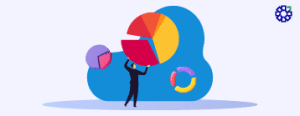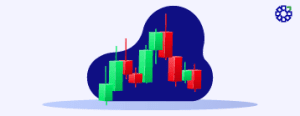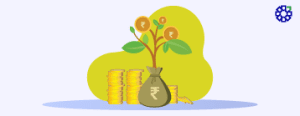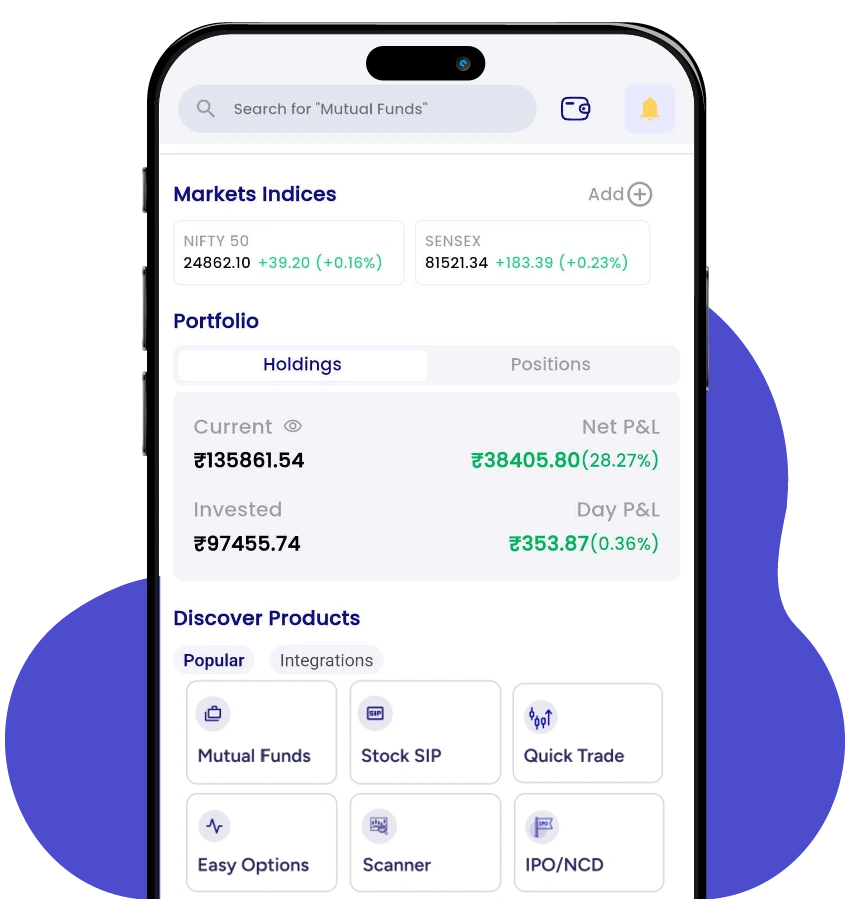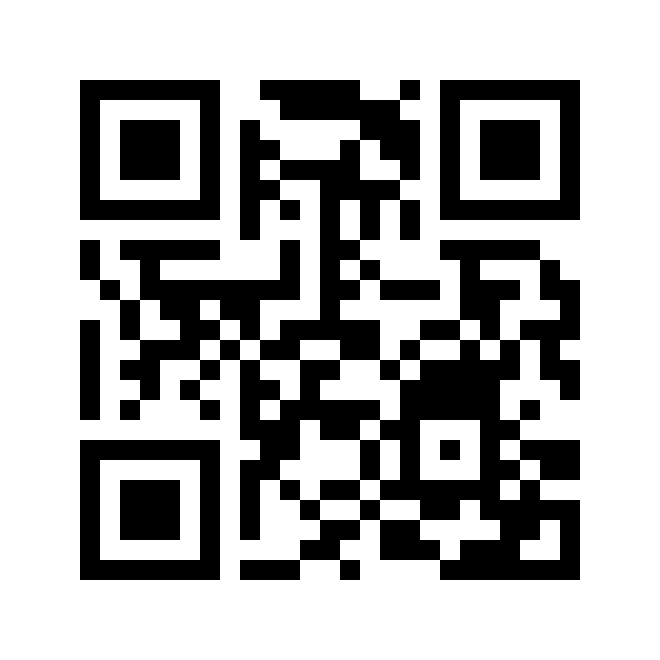Everything to Know About Put-Call Ratio
- 1st July 2025
- 9 min read
To create a healthy investment portfolio, investors need to evaluate stock market sentiment and its dynamics. Nowadays, investors use several financial tools to examine the market temperament before investing in the stock market. Understanding the basics of financial measurement ratios requires thorough research on their application and role.
This blog provides a brief analysis of the put and call ratio, its significance, limitations, and a step-by-step process to trade using this ratio.
What is the Put-Call Ratio?
The Put and Call Ratio (PCR) is a derivatives-based indicator that helps traders analyse market sentiment by comparing the volume of put options to call options. It is often used as a contrarian tool, offering insights into whether the market is leaning more toward bearish or bullish behaviour.
In simple terms, the PCR helps traders evaluate whether recent market movements, either upward or downward, are potentially overextended or justified. In the world of options, a ‘put’ gives the right to sell a security at a predetermined price, while a ‘call’ provides the right to buy.
When traders are purchasing more puts than calls, it signals a rise in bearish sentiment. On the other hand, if call buying outpaces put buying, it indicates a bullish outlook. By interpreting this ratio, traders can have a better understanding of shifts in market psychology and make more informed decisions.
Calculation of Put-Call Ratio
The calculation of the PCR ratio can be done in two ways. One of them is based on the interest of a particular day, and another is based on the volume of the options trading. Let us understand each of them with an example:
-
Based on the open interest of a particular day
You can get the put and call ratio by dividing the total number of open interest of outstanding put options by the open interest of outstanding call options for a particular security.
PCR = Total open interest for put options/Total interest for call options
-
Based on trading volume of a particular day
You can also calculate the put-call ratio using the put-and-call options of a specific day. Based on the particular day’s trading activity, this formula indicates the insights of the current market sentiment.
PCR = Total trading volume for put options/Total trading volume for call options
Evaluation of Put-Call Ratio
The put and call ratio is an important indicator in determining the prevailing market sentiment. Basically, this ratio compares the volume of call options to put options traded in a given market. Let us evaluate the ratio while considering different outcomes:
- A put option is used to hedge against market downturns or predict price declines, and a call option bets on the price increase and hedges against market strength.
- A PCR ratio below 1 indicates a bullish outlook, which means there is a higher volume of call options compared to put options. On the other hand, a PCR above 1 shows a higher volume of put options compared to call options, which is a bearish sentiment.
- A put-call ratio of more than 0.7 or 1 indicates increased buying of put options. It highlights bearish sentiment since traders hedge against sell-offs or predict falling prices.
- However, a PCR ratio below 0.7, or closer to 0.5, indicates a bullish sentiment and suggests optimism for market gains.
Significance of Put-Call Ratio
The put and call ratio helps determine the volume of puts relative to calls for a specific timeframe to determine market sentiment. The pointers below show why it is important to use a PCR ratio:
- Traders can understand the direction of price movements of underlying securities. This helps them to organise directional bets on each order.
- Often seen as a contrarian indicator, the put-call ratio points out times when sentiment is too low or too high. This helps traders make informed decisions and grow their wealth.
- This ratio not only determines the market sentiments but also helps in evaluating the trading behaviour of participants in the market.
- The extreme values of PCR show whether a market is overbought or oversold.
What are the Limitations of the Put-Call Ratio?
One of the biggest drawbacks of PCR is that it does not always show the crucial nuances of the market sentiments. Here are the other limitations of using this put-and-call ratio:
- It becomes difficult to calculate the PCR for stocks, as multiple stocks on the market do not have options.
- Although it is a contrarian indicator, relying on it may be misleading without considering other market factors.
- Traders must know how to read the put-call ratio chart correctly since even a small change acts as a crucial indicator of the market movement.
- Traders should also consider their risk tolerance and financial objectives before making decisions on PCR.
PCR Ratio – The Contrarian Indicator
Traders sometimes use this put-and-call ratio as a contrarian indicator when values reach extreme levels. A contrarian investing strategy means going against prevailing market sentiment.
For instance, a high PCR, such as 1.5, highlights that the market sentiment is overly bearish, which is seen as a buying opportunity for traders. They believe market sentiment will adjust soon when those with short positions change places to cover. In addition, the market will face a downturn.
Contrarily, most traders are bullish if the PCR ratio is lower, such as 0.2. Contrarian traders can see this as an indicator that the market is overbought and will experience a downfall soon.
Most of the time, Nifty PCR moves between 0.8 and 1.3, with 0.8 being the lower bound and 1.3 being the upper bound.
Put-Call Ratio Examples
Since you have come across the calculation, significance, and limitations of the put-and-call ratio, let us understand its calculation using two examples:
-
Based on the open interest of a particular day
You want to calculate the PCR of company ABC. The open interest for put options on company ABC is 3000 contracts, and the total interest on call options is 7000 contracts. Based on the formula, the PCR will be: 3000/7000 = 0.42
-
Based on the trading volume of a particular day
You have to measure the put-and-call ratio of company XYZ. The total trading volume of put options for XYZ is 4000 contracts, and the total trading volume for call options of XYZ is 7000 contracts. According to the formula, the PCR will be: 4000/7000 = 0.57
The outcome of the PCR ratio in both these instances is below 1. This indicates that traders are buying more call options than put options. They are predicting a bullish trend in the future.
Step-by-Step Process to Trade Using a Put-Call Ratio
Trading with the PCR ratio helps to evaluate the relationship between the number of call options and put options in the market. Here is a step-by-step process to trade using a put-and-call ratio:
- Step 1: Understand the PCR ratio, including its calculation procedure.
- Step 2: Interpret PCR values like an outcome below 1 indicates a bullish sentiment and an outcome more than 1 implies a bearish sentiment.
- Step 3: Analyse strike prices of options to assess PCR by getting insights into market expectations.
- Step 4: Analyse the trading volume of call and put options. Knowing strike prices and expiry date of a particular asset helps you to determine the directional movement.
- Step 5: Finally, evaluate open interest, which is the total outstanding contracts for a specific option. A higher open interest indicates increased market participation, while a lower open interest indicates reduced market interest.
Final Thoughts
A put-and-call ratio helps traders understand the direction of price movements of underlying securities. A PCR ratio also helps in evaluating the participants’ trading behaviour in the market. However, relying too much on it can be misleading without considering other market factors.
Want to invest in derivatives and generate higher returns? Download the PL Capital Group – Prabhudas Lilladher application and open a Demat account for free! PL Capital uses algorithms to analyse vast amounts of data and execute trades within seconds.
Frequently Asked Questions
1. How to evaluate a PCR ratio?
A put-and-call ratio below 1 means a bullish outlook. It indicates that there is a higher volume of call options than put options. A PCR of more than 1 indicates a higher volume of put options than call options, which is a bearish sentiment.
2. How effective is the put-call ratio as an indicator?
A put-call ratio is an effective market indicator since it allows one to understand the direction of price movements of any underlying security. This helps traders to organise directional bets on each order.
3. What does a put-call ratio higher than one indicate?
A put-call ratio of more than 1 shows that put options are more than call options. This is an indication of bearish market sentiment.
4. What do you mean by PCR ratio in the share market?
A PCR ratio is a derivative indicator that defines options market sentiment. It helps to determine the bearish and bullish impact of the market.

